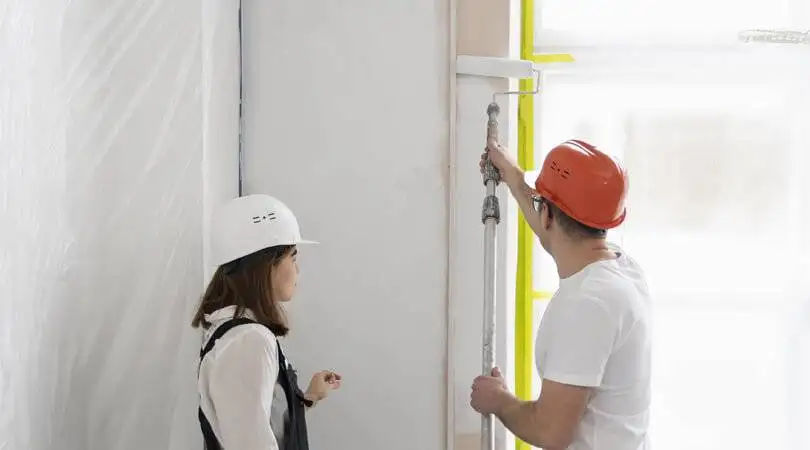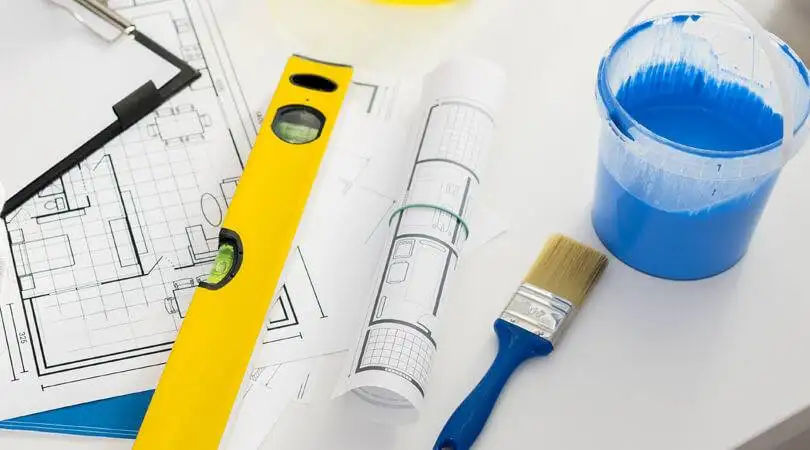How to Estimate a Painting Job: 9 Simple Steps to Making a Profit

Coming up with the right estimate for paint jobs is tricky, but not impossible.
It may seem like a lot of work before the work even gets started, but knowing how to estimate a paint job accurately to account for all costs can mean the difference between breaking even and making a healthy profit. To this end, however, you need to know the right methods for creating a paint job estimate.
That being said, there is no specific rule book on how to estimate painting jobs. Ask five different contractors how to price a painting job, and you’re likely to get five very different calculations. Every painting company has its own price range, depending on the resources and paint jobs they have. So, if you are relying on market practices and trying to emulate them for your business, you are in for a world of confusion.
Ready to get started with Field Promax?
Sign Up FreeGiven that’s the case, you’re probably wondering how other businesses provide painting estimates. How is the price calculated, and what would a customer choose? How do companies ensure that they win the bid? If you are thinking of such questions, then you are in the right place because, in this blog, we have a solution for all of your questions.
In this blog, you will learn how to estimate painting jobs most efficiently. For your convenience, we have broken down the entire process into seven simple steps. Just follow them, and your chances of winning more bids will skyrocket in no time.
But before we delve into the discussion, let’s try to understand some basics.
Importance of Creating Accurate Paint Job Estimates
Client Satisfaction
Whether you are trying to create an interior paint job estimate or an exterior paint estimate, an accurate estimate ensures that clients have realistic expectations regarding the cost and timeline of the painting project. When clients receive accurate estimates, they are more likely to be satisfied with the final outcome and the overall experience, leading to positive reviews and potential referrals.

Budget Management
Creating accurate estimates helps both the client and the painting contractor manage their budgets effectively. By knowing the expected costs upfront, clients can plan their finances accordingly, while contractors can ensure that they allocate resources efficiently to complete the project within the estimated budget.
Resource Allocation
Accurate paint job estimates allow painting contractors to allocate resources such as materials, labor, and equipment more effectively. With a clear understanding of the scope of work and the required resources, contractors can streamline their operations, minimize waste, and optimize productivity, ultimately leading to better project outcomes.
Time Management
Estimating the duration of a painting project accurately is crucial for effective time management. Accurate estimates help contractors schedule their work efficiently, avoid overcommitting to multiple projects simultaneously, and prevent delays caused by unforeseen challenges. This leads to smoother project execution and timely completion, enhancing the contractor’s reputation for reliability and professionalism.
Profitability
Accurate estimates are essential for ensuring the profitability of a painting business. By accurately assessing the costs involved and pricing their services accordingly, contractors can maintain healthy profit margins while remaining competitive in the market. Overestimating or underestimating can lead to financial losses or missed opportunities, so precision in estimation is key to sustainable business growth.
Things to Remember While Creating Paint Job Estimates
Creating an accurate paint job estimate involves several key concerns to ensure that the estimate reflects the true scope and cost of the project. If you want to learn how to write an estimate for a painting job, here are some main considerations you must remember at all times:
Scope of Work
Understanding the full scope of the painting project is crucial. This includes factors such as surface preparation, types of surfaces to be painted, the number of coats required, areas to be painted, and any additional services like trim work or wall repairs. Failing to account for all aspects of the job can lead to inaccuracies in the estimate.
Material Costs
Estimating the cost of materials accurately is essential. This involves calculating the quantity of paint needed based on surface area, selecting the appropriate paint quality, and factoring in primer, sealants, and any specialized materials required for the project. Fluctuations in material prices or underestimating quantities can result in cost overruns.
Labor Costs
Another major concern in creating an accurate interior or exterior painting estimate is calculating labor costs. Properly estimating labor costs involves considering the time required to complete each aspect of the project, including preparation, painting, cleanup, and any additional tasks. Factors such as labor rates, skill levels of workers, and productivity expectations must be taken into account to ensure that the estimate accurately reflects labor expenses.
Overhead and Profit Margin
It’s important to include overhead costs such as equipment maintenance, insurance, permits, administrative expenses, and a reasonable profit margin in the estimate. Neglecting to factor in these costs can result in underpricing the project and negatively impacting the profitability of the business.
Unforeseen Challenges
Anticipating and accounting for potential challenges or complications that may arise during the project is essential for creating an accurate estimate. This includes factors such as weather delays, unexpected repairs, changes in client preferences, or additional work requested during the project. Building contingency allowances into the estimate helps mitigate the risk of cost overruns due to unforeseen circumstances.
Market Factors
Consideration of current market conditions, such as local competition, demand for painting services, and economic trends, can influence pricing and overall project costs. Staying informed about market dynamics helps ensure that the estimate remains competitive while still covering all necessary expenses.
Communication with the Client
Clear communication with the client is essential throughout the estimation process. If you want to write an estimate for a paint job that gets immediate approval, it is a must to ensure that your customers are aware of the various costs and variables from the get go. This ensures that their expectations are aligned with the proposed scope of work and associated costs. Understanding the client’s needs, preferences, and budget constraints helps create an estimate that meets their requirements while avoiding misunderstandings or disputes later on.

How to Create an Accurate Paint Job Estimate
Now that you are aware of the main components of a paint job estimate and its main concerns to ensure its accuracy, let’s go through the steps to create a perfect one for you.
1. Visit the Job Site Before Starting
Visiting the jobsite beforehand is crucial to creating the perfect estimate. If you want to know how to price a painting job accurately, then you must be aware of the job site as well as the job specifications. There could be factors that drive up the price. For example, the walls might be in poor condition, dark, or need to be painted in different colors. Imagine you have already given a quotation to the client. Then you visit the site and realize your estimation went wrong because of a wrong prediction, and now you have to face a significant loss.
Also, it is a great opportunity to meet your client and create a valuable relationship with them. It will also indicate how dedicated you are to your customers. You will come to know what the client is expecting. Take a professional painter along with you; it will help you know how much paint is required so that you can easily calculate the price later.
2. Review the Plans Thoroughly
If you want to create the perfect painting estimate on the very first try, make sure you review the project plan and the specifications of the structure you need to paint. Not only does it give you a clear idea of what needs to be done, but it also saves you valuable time and money.
There are many points in the design phase where errors can be introduced into plans, and even small mistakes can end up costing a painting contractor’s profit. So you’ll want to examine the plans to make sure that there are no errors and that the measurements are clear and readable. To ensure this, remember to review the following aspects before you start writing the estimate:
- Site Plans
- Floor Plans
- Interior Elevations Drawings
- Reflected Ceiling Plans
- Various schedules the architect has provided
The more knowledge you have of the structure and the surface area you need to cover, the more likely it is that your job will be successful. It’s especially important for painting contractors involved in new construction or renovation projects.
3. Prepare a Checklist
As you’re now thoroughly familiar with the site plans, here are some standard variables you will want to watch for. Use these questions as the basis for a basic checklist you complete before estimating any painting job.
- Will any panels require repair or replacement?
- Are panels real wood, metal, or plastic?
- Are the surfaces flat, or do they have raised molding or louvers?
- Are there hard-to-remove imperfections (scuff marks etc)
- Is the surface smooth or will it need filler and sanding?
- Do the screws, nails, and glue joints for doors and windows need repair?
- Are the door bottoms clear of the floor or rub on carpets?
- How many coats of prior finish are on the surfaces? 1, 3, or 12?
- Was the last coat of finish properly applied to the surfaces or does it need to be stripped?
- Do any of the surfaces need to be washed, scrubbed, or cleaned with chemicals?
- Will the hardware on the site be easily removed (doorknobs? hinges?)
- Will the hardware finish need to be replaced or refinished?
- Are any hinges clean and free-swinging?
- Will the surfaces be painted or stained?
- Will the surfaces be painted in latex, enamel, lacquer, or polyurethane?
- Will all sides of the surface be the same color? Will any sides of the surface require more than one color?
- What tools will you use to cover the surfaces (brush, roller, spray)?
- If multiple coats, how much drying time between coats?
- Will you have to make a second or third trip to complete the job?
- What brand of paint will be used?
As you can see, depending on how you answer these questions, the time it takes to complete a job can vary dramatically, no matter how experienced you are. And it highlights again that, for the most part, every painting estimate is a custom job. For these reasons, you should work through this checklist or one similar that you customize for each job before you develop the estimate.
Want a personalized demo?
See how Field Promax can transform your field operations
4. Calculate the Material Cost
Once you familiarize yourself with the project plan and requirements, it’s now time to figure out the price for materials. This includes paint, and supplies.
When it comes to the price of paint per gallon, a wide range exists—anywhere from $15 to $80, depending on the brand and the quality. But in general, paint per gallon will cost you roughly $15 to $50 on average. A veteran contractor with established relationships with vendors can purchase paint for half the price of a client or owner. For example, if a homeowner can purchase a gallon of paint for $40, an experienced contractor can purchase it for $20. As you become more experienced, leverage your relationships with vendors to save money by receiving bulk discounts for paint.
5. Include the Equipment Cost
The cost of equipment and supplies for a paint job, on the other hand, might vary significantly based on the size and scope of the job. For simpler projects, you may just need a few essential materials, such as paint, primer, tarps, and ladders. Larger projects will require more materials, such as scaffolding, drop cloths, plastic sheeting, and so on.
6. Add the Labor Cost
The labor cost for a paint job can vary depending on the size of the area measured in square feet and the geographical location. For a small paint job, such as a room or bathroom, the labor cost may be around $200. For a larger project, such as an exterior paint job, the labor cost can be upwards of $1,000. The average cost of labor for a paint job is between $500 and $700. While the hourly labor cost is the primary factor, there are other aspects to keep in mind when figuring out how much it will cost to complete exterior and interior paint jobs, such as the expertise of your team members, additional time for priming and caulking, etc.
7. Factor in Overhead Costs
According to the experts, overhead costs make up only around 10% of a typical tradesperson’s budget. However, many entrepreneurs fail to adequately budget for this element of their projects. If you want to master the trick of how to write a painting estimate, this is perhaps the most crucial step.
Missing out on the overhead costs will end up costing you more than you quoted the customer once the project is completed. Unless you want to pay this out of your own pocket and incur a loss, you will need to ask the customer for more money than you mentioned in the estimate before. Not only does this lead to conflicts, but it could also affect your reputation as a brand considering the lack of transparency and efficiency.
8. Leave Room for A Profit
Making a profit isn’t all about cashing out your stock options or landing a bigger painting job. The method you use to estimate the cost of a paint job will determine how much of your revenue is left after covering fixed costs and available for investment in your business. So, when you quote your price, make sure to factor in your markup into your final estimate.
While each painting business is unique and size affects how much markup each company should charge, you should be aiming for no less than 50% profit margin if you’re a small contractor and approximately 30% if you’re a larger company. This markup not only ensures you’ll make a profit, but also that your business will continue to grow. It also helps you account for all of the variable or hidden costs that were impossible to anticipate when you initially started, including mistakes or oversights.
9. Calculate the Final Price
Materials Cost + Labor Costs + Overhead Costs + Marketing Costs (optional) + Markup Costs/Profit = Total Painting Project Costs
The final step is to calculate your final painting estimate. Add up all your expenses to get your total project estimate. Some professional painting companies add their marketing costs into their markup. It’s simply up to you to manage your expenses. You can calculate your final price with this simple formula:
Painting Job Template
If you are still unsure about writing a paint job template by yourself, refer to the following painting estimate template.

Conclusion
It may take a bit longer, but careful estimating will help you be more profitable, look more professional to potential customers, and win the jobs that are best for your business. Because the only thing worse than getting outbid on a job is winning it by being the lowest bidder, who then loses money.
But now you know how to estimate a painting job. Just follow the steps, and you will have a winning bid to seal the deal.
Having said that, the process could seem challenging for some people, especially for those starting a new painting business. There are a lot of things to remember and a lot of items to calculate. If you are planning to do this manually, using the good old pen, paper, or spreadsheet, you are leaving a lot of room for errors. And in the field service industry, there is nothing more fatal than an inaccurate or vague estimate.
The best way to avoid the risk and create accurate, professional-looking paint job estimates is by using estimating software like Field Promax. This smart digital tool automates the process and makes sure no items are overlooked. The result— you provide the most flawless, impressive, and eye-catching estimate that wins you every bid, every time.
For more information, contact Field Promax
We're here to help you get started